
The USS Enterprise was a schooner, built by Henry Spencer at Baltimore, Maryland, in 1799. Her first commander thought that she was too lightly built and that her quarters, in particular, should be bulletproofed. Enterprise was overhauled and rebuilt several times, effectively changing from a twelve-gun schooner to a fourteen-gun topsail schooner and eventually to a brig. Enterprise saw action in the Caribbean, the Mediterranean, and the Caribbean again, capturing numerous prizes. She wrecked in July 1823.

The Gunboat War was a naval conflict between Denmark–Norway and Great Britain supported by Sweden during the Napoleonic Wars. The war's name is derived from the Danish tactic of employing small gunboats against the materially superior Royal Navy. In Scandinavia it is seen as the later stage of the English Wars, whose commencement is accounted as the First Battle of Copenhagen in 1801.

The Battle of Lyngør was a naval action fought between Denmark-Norway and the United Kingdom in 1812 on the southern coast of Norway. The battle ended in a Dano-Norwegian defeat, and marked the end of the Kingdom of Denmark-Norway's involvement in the Napoleonic Wars.

HDMS Najaden was a frigate of the Royal Dano-Norwegian Navy, which she served from 1796 until the British captured her in 1807. While in Dano-Norwegian service she participated in an action at Tripoli, North Africa. She served the Royal Navy as the fifth rate HMS Nyaden from 1808 until 1812 when she was broken up. During her brief British service she participated in some small attacks in the Barents Sea during the Anglo-Russian War.
HMS Dictator was a 64-gun third-rate ship of the line of the Royal Navy, launched on 6 January 1783 at Limehouse. She was converted into a troopship in 1798, and broken up in 1817.
The action of 22 June 1803 was a naval battle between the United States Navy and the Tripolitan Navy during the First Barbary War. Two ships from the American squadron blockading Tripoli, USS John Adams and USS Enterprise, met and engaged a Tripolitan polacre along with nine gunboats. After fighting a sharp action for forty five minutes the gunboats veered off and the polacre was abandoned. The Tripolitians later retook the polacre and were reengaged by the Americans before the vessel was destroyed in a large explosion.
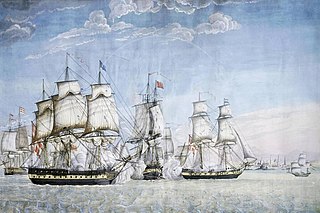
HDMS Sarpen was a brig of the Royal Dano-Norwegian Navy, in which she served from 1791 until the British seized her in 1807. While in Dano-Norwegian service she participated in an indecisive action at Tripoli, North Africa. She served the Royal Navy as HMS Sarpen from 1808 until 1811 when she was broken up. During her brief British service she participated in the Walcheren Expedition. Her name is that of a waterfall on the Norwegian river Glomma.
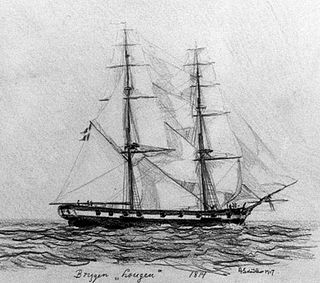
HDMS Lougen was a Danish naval brig launched in 1805. She saw service in the Danish navy and participated in two notable actions against the British Royal Navy during the Gunboat War. In 1814, as a result of the Treaty of Kiel, the Danes transferred her to the Norwegian navy. The Norwegians sold her to German merchants in the Scheld in 1825. She was finally shipwrecked near Bremerhaven in 1881.
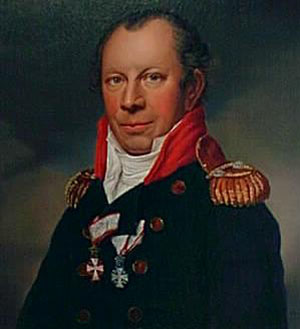
Carl Wilhelm Jessen was a Danish naval officer and Governor of St Thomas in the Danish West Indies.

Grinder was a gunboat serving as a tender, rather than a commissioned warship, to HMS Anholt, the British garrison on the island of Anholt during the Gunboat War. Grinder's origins are obscure, but the Danes captured her in 1810 and the British recaptured her in 1811. She was sold in 1832.

Steen Andersen Bille, was a Danish vice-admiral and minister for the navy. He was famous for his service in the Danish Royal Navy, particularly during the First Schleswig War, 1848–51.
HMS Fama was the Danish brig Fama, of fourteen guns, built in 1802, that the British captured in 1808. She was wrecked at the end of the year.
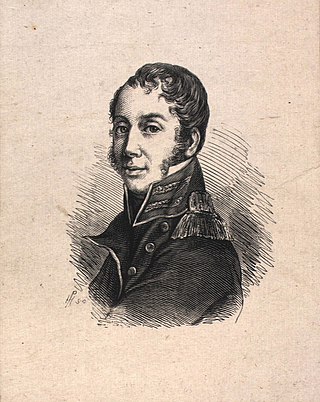
Hans Peter Holm was a Danish naval officer who commanded vessels of the Dano-Norwegian Navy in several actions. He commanded several naval vessels during the Gunboat War. His most important action occurred in 1812 at the Battle of Lyngør when a British squadron, led by the British ship-of-the-line HMS Dictator, destroyed his vessel, HDMS Najaden. Holm sustained wounds in the battle but survived, only to drown in an accident shortly afterwards.

Steen Andersen Bille (1751–1833) was a Danish naval officer and a member of the Bille family. He rose to the rank of admiral and became a Privy Counselor during the period of Denmark's policy of "armed neutrality" following the Gunboat War. He was instrumental in the rebuilding of the Danish Navy after 1814.
HDMS Lolland was launched in March 1810. She served in at least four major engagements during the Gunboat War before she was transferred to the Norwegian navy after the Treaty of Kiel brought about the separation of Norway from Denmark in 1814. Lolland continued to serve with the Norwegian Navy until sold in 1847.

Lorentz Fisker (1753–1819) was a Danish naval officer who charted the waters of southern Norway and the Kattegat, and organised Norwegian defences against Britain and Sweden.

Michael Bille (1680–1756) was an officer in the Danish Royal Navy during the Great Northern War. He was commissioned as a junior lieutenant in 1699, advancing steadily to become Vice admiral when he retired in 1737.
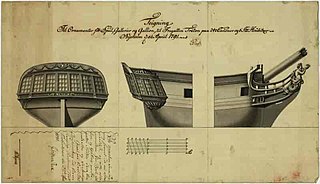
HDMS Triton was a Danish frigate launched in 1790 which operated in Danish/Norwegian home waters and in the Mediterranean in the protection of Danish merchant ships - not only from Barbary pirates but also from potential British privateers. The period in which it operated was fraught with political and practical difficulties which led to two battles at Copenhagen and other, lesser, actions.

Edouard Suenson was a Danish vice admiral known for his participation in the First and Second Schleswig War, and served as the main Danish commander at the Battle of Heligoland in the latter.

HDMS Thetis was a frigate of the Royal Dano-Norwegian Navy, which she served from 1790 to 1850. She is remembered as the ship that carried a young Bertel Thorvaldsen to Malta in 1796. The sculptor ended up living and working in Rome the next more than forty years. He created a large number of small portrait drawings of the officers on board the ship.
















